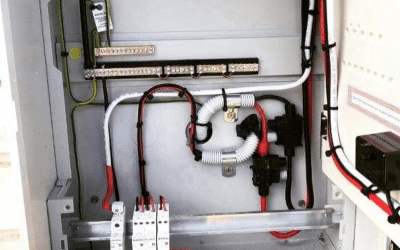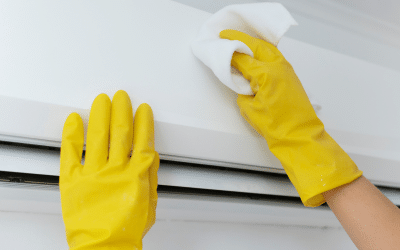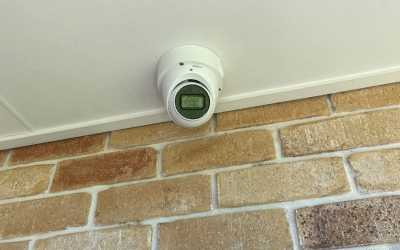In the bustling world of the 21st century, it’s hard to imagine a day without electricity. From the moment we wake up to the time we go to bed, electricity is intricately woven into every aspect of our lives.
Whether it’s your morning ritual of brewing a hot cuppa or catching up on your favorite TV show at the end of a long day, none of it would be possible without electricity. In fact, our homes are buzzing hubs of electrical activity, powering everything from essential appliances such as refrigerators and air conditioning units, to numerous smaller devices like laptops, mobile phones, and kitchen gadgets. Without electricity, our modern lives in Brisbane would simply grind to a halt.
While we often take this vital resource for granted, understanding how does electricity flow through your home can help ensure that it’s being used safely and efficiently. Basic knowledge of your home’s electrical system can not only aid in identifying potential issues before they become serious but also guide you in making informed decisions when it comes to household electricity usage. After all, a home that handles its power effectively is not only safer but also contributes to a more sustainable Brisbane.
The Basics: An Overview of Your Home’s Electrical System
Navigating the intricate network of your home’s electrical system may seem daunting, but it all boils down to a few key components working in harmony to ensure a steady flow of electricity.
Key Components of a Home’s Electrical System
At the heart of your home’s electrical system is the main service panel, also known as the breaker box, which distributes electricity to various circuits within your home. Each circuit is protected by a circuit breaker, a safety device designed to prevent electrical overload. The wiring within your home carries electricity from the service panel to outlets and switches, which, in turn, provide power to your appliances and light fixtures.
The Flow of Power: Understanding Current
Current, in the realm of electricity, refers to the flow of electric charge. In your home, the electric current typically flows in one direction, from the service panel through the circuits to the electrical devices, and then back to the service panel. This entire pathway of electric current is vital in powering your everyday conveniences.
Power Generation: The Origin of Your Home’s Electricity
As we flip a switch or power on an appliance, it’s easy to overlook the complex process that brings electricity to our doorstep.
How Power Stations Generate Electricity
Power stations, often situated far from residential areas, are the birthplace of your home’s electricity. They use various energy sources, such as coal, gas, or renewables like solar and wind, to produce electricity. The process involves converting the energy source into electrical energy which can then be transmitted across large distances.
Transmission and Distribution: Delivering Power to Your Home
From the power station, high-voltage electricity travels through a network of substations and transmission lines, eventually reaching your neighborhood. The voltage is then stepped down via a local transformer to a safer level suitable for home use. It’s this electricity that enters your home’s service panel, ready to power your daily activities in your Brisbane home.
Managing Power: The Electrical Panel
Just as the human heart pumps blood throughout our bodies, electrical panel is the crucial component that channels electricity throughout our homes.
The Central Role of the Electrical Panel in Power Management
Located in an easily accessible area of your home, the electrical panel acts as a control center for your home’s electrical system. It directs electricity from the utility lines into individual circuits, each of which serves a specific area of your home. The electrical panel is designed to manage the distribution of power effectively and safely, ensuring that every switch, outlet, and appliance gets the right amount of electricity without causing any overloads.
The Main Breaker: The First Line of Defence
At the top of the electrical panel, you’ll find the main breaker. This crucial component controls the flow of electricity from the utility lines into your home. If a power surge occurs, the main breaker will ‘trip’ or switch off automatically, preventing potential harm to your electrical system or appliances.
Circuit Breakers: Protecting Your Home’s Electrical Circuits
Under the main breaker, you’ll see a series of smaller switches – these are individual circuit breakers. Each circuit breaker is responsible for protecting a specific circuit in your home. In the event of an overload or short circuit, the affected breaker will trip, cutting off power to that circuit. This ensures the rest of your home remains powered.
The Veins of Your Home: Understanding Electrical Wiring
Much like the veins in our body transport life-sustaining blood, the wiring in your home carries the life-sustaining electricity that powers everything from your lights to your fridge.
The Different Types of Wires in Your Home
Just as there are different types of blood vessels, there are also different types of electrical wires, each with its own specific function. These different types include hot wires, neutral wires, and ground wires.
Hot Wires, Neutral Wires, and Ground Wires: Their Roles and Functions
Hot wires, as the name suggests, carry the current from your electrical panel to your appliances and fixtures. These wires are usually black or red. Neutral wires, often white or gray, carry the current back to the electrical panel once it’s done its job. Lastly, ground wires provide a safe path for electricity in case of a fault. They’re typically green or bare copper. Together, these wires ensure a safe and efficient flow of electricity through your home.
Circuitry: The Roadways for Electricity
If wires are the veins of your home, circuits are the roadways that dictate the path of the electricity. A circuit begins at the electrical panel, travels to an outlet or fixture, and then returns to the panel, creating a complete loop. Your home has multiple circuits to distribute electricity evenly and prevent overloading. Each circuit is protected by a circuit breaker to ensure it functions safely and efficiently.
How Electricity Reaches You: Outlets and Switches
Once the electricity has journeyed through your home’s wiring system, it needs a final destination: outlets and switches are the end of the line for this electrical journey.
The Design and Function of Wall Outlets
Wall outlets, also known as power points in Australian vernacular, are the access points that allow us to tap into our home’s electrical system. Every device we plug into an outlet draws on the electricity that’s continually flowing through our home’s wiring.
Standard Outlets versus GFCI Outlets: What’s the Difference?
Standard outlets are the most common, but you may have also come across Ground Fault Circuit Interrupter (GFCI) outlets in certain areas of your home, such as your bathroom or kitchen. GFCIs are designed to protect you from electrical shocks, cutting off the power if they sense an imbalance in the current.
Light Switches: How They Control Power Flow
Light switches are another key component of our home’s electrical system, enabling us to control when and how does electricity flow to our lighting fixtures. The simple flick of a switch can illuminate a room, but have you ever wondered how this process works?
From Single-Pole Switches to Dimmers: Types of Light Switches
There’s a variety of light switches available, each serving a unique purpose. Single-pole switches are the most common type found in homes, controlling a light from a single location. Meanwhile, dimmer switches allow you to adjust the light level, offering more control over the atmosphere and energy usage in your home.
Electricity Usage: Powering Your Appliances
With the power available at the flick of a switch or the insertion of a plug, it’s easy to forget about the complex path electricity takes to power our devices. This section will take a look at how our appliances use this carefully regulated electricity to perform their functions.
How Different Appliances Use Electricity
Every appliance in your home uses electricity in unique ways. For instance, your fridge uses electricity to run its motor and keep your food cool, while your oven uses it to generate heat. Meanwhile, more complex devices, like your TV, use electricity to power intricate electronic circuits. Understanding how these appliances utilise electricity can help us appreciate the marvels of modern living.
The Impact of High-Power Appliances on Your Electrical System
High-power appliances, such as air conditioners and electric water heaters, draw a substantial amount of electricity from your system. While our electrical systems are designed to handle these demands, using many high-power appliances simultaneously can strain your home’s electrical system, potentially causing circuit breakers to trip. Awareness of these high-power devices an
Safety and Maintenance: Ensuring Reliable Power Flow
In order to maintain a safe and efficient home electrical system, it is crucial to prioritize both safety practices and regular maintenance. By following essential safety guidelines and performing routine maintenance tasks, you can minimize the risk of electrical hazards and ensure a reliable power flow in your Brisbane home.
Essential Safety Practices to Prevent Electrical Hazards
Handle Electrical Devices with Care: Always unplug appliances before cleaning or repairing them. Avoid using devices with frayed cords or damaged plugs.
Avoid Overloading Outlets: Do not overload outlets by plugging in too many devices at once. Use power strips with built-in circuit breakers to prevent overloads.
Install Ground Fault Circuit Interrupters (GFCIs): GFCIs are crucial in areas exposed to moisture, such as bathrooms and kitchens. They quickly cut off power in the event of a ground fault, protecting against electric shocks.
Keep Water Away from Electrical Devices: Water and electricity do not mix. Keep electrical devices and outlets away from water sources to prevent the risk of electric shock.
Childproof Electrical Outlets: Install childproof outlet covers or tamper-resistant outlets to protect young children from inserting objects into outlets.
Routine Maintenance for Your Home’s Electrical System
Regular Inspection: Conduct periodic inspections of your electrical system to identify any signs of damage, wear, or loose connections. Look for flickering lights, buzzing sounds, or warm outlets, as they may indicate potential issues.
Test and Replace Batteries: Test the batteries in your smoke detectors regularly and replace them annually. This ensures they will function properly in the event of a fire.
Clean Air Vents and Electrical Panels: Dust and debris can accumulate in air vents and electrical panels, potentially causing overheating or decreased efficiency. Clean these areas regularly to maintain proper airflow and prevent hazards.
Schedule Professional Inspections: Engage a licensed electrician for a comprehensive inspection of your electrical system every few years. They can identify hidden issues and provide expert recommendations for repairs or upgrades.
By incorporating these safety practices and maintenance routines into your household habits, you can create a safer and more reliable electrical system that will keep the power flowing smoothly in your Brisbane home.
When You Need a Pro: The Role of Electricians
Sometimes, electrical issues go beyond what can be handled with basic knowledge or DIY solutions. In such cases, it’s important to recognize when it’s time to call in a professional electrician. This section will explore the situations that warrant professional expertise and the crucial role that electricians play in maintaining the electrical safety and functionality of your home.
Common Electrical Problems That Require a Professional
Certain electrical problems are best left in the hands of qualified electricians. This part will highlight common issues, such as frequent circuit breaker tripping, electrical surges, flickering lights, or outdated electrical systems. Understanding these problems will help you identify when it’s necessary to seek professional assistance to avoid potential hazards and ensure the reliability of your home’s electrical system.
How to Choose a Reliable Electrician
Finding a reliable electrician is essential for resolving electrical issues and carrying out installations or upgrades in your home. This section will provide valuable tips on selecting the right electrician for your needs. From checking licenses and certifications to reading customer reviews and obtaining detailed quotes, you’ll gain the knowledge to make an informed decision and ensure the electrical work is performed by a skilled professional you can trust.
Summary: Power at Your Fingertips
As we conclude our exploration of how your home’s electrical system handles power flow, we gain a deeper understanding of the invisible force that empowers our daily lives in Brisbane.
From the power generation at the utility companies to the intricate wiring and components within your home, we’ve uncovered the fascinating journey of electricity. We’ve learned about the vital role of the electrical panel, the different types of wires, the functions of outlets and switches, and the safe usage of appliances. It’s this comprehensive system that allows power to flow seamlessly, bringing light, comfort, and convenience into our homes.
With knowledge comes power, both in a literal and metaphorical sense. Understanding how your home’s electrical system operates empowers you to make informed decisions and take necessary precautions. By implementing safety practices, conducting routine maintenance, and knowing when to call a professional, you can ensure the reliable and efficient use of electricity while keeping your home and loved ones safe.
Remember, your home’s electrical system is more than just switches and wires—it’s a lifeline that enables the modern comforts we often take for granted. By appreciating the journey of electricity and embracing responsible power usage, you become an active participant in creating a secure and sustainable living environment.
Thank you for joining us on this enlightening exploration of your home’s electrical system. As residents of Brisbane, let us continue to keep current and embrace the power at our fingertips.







